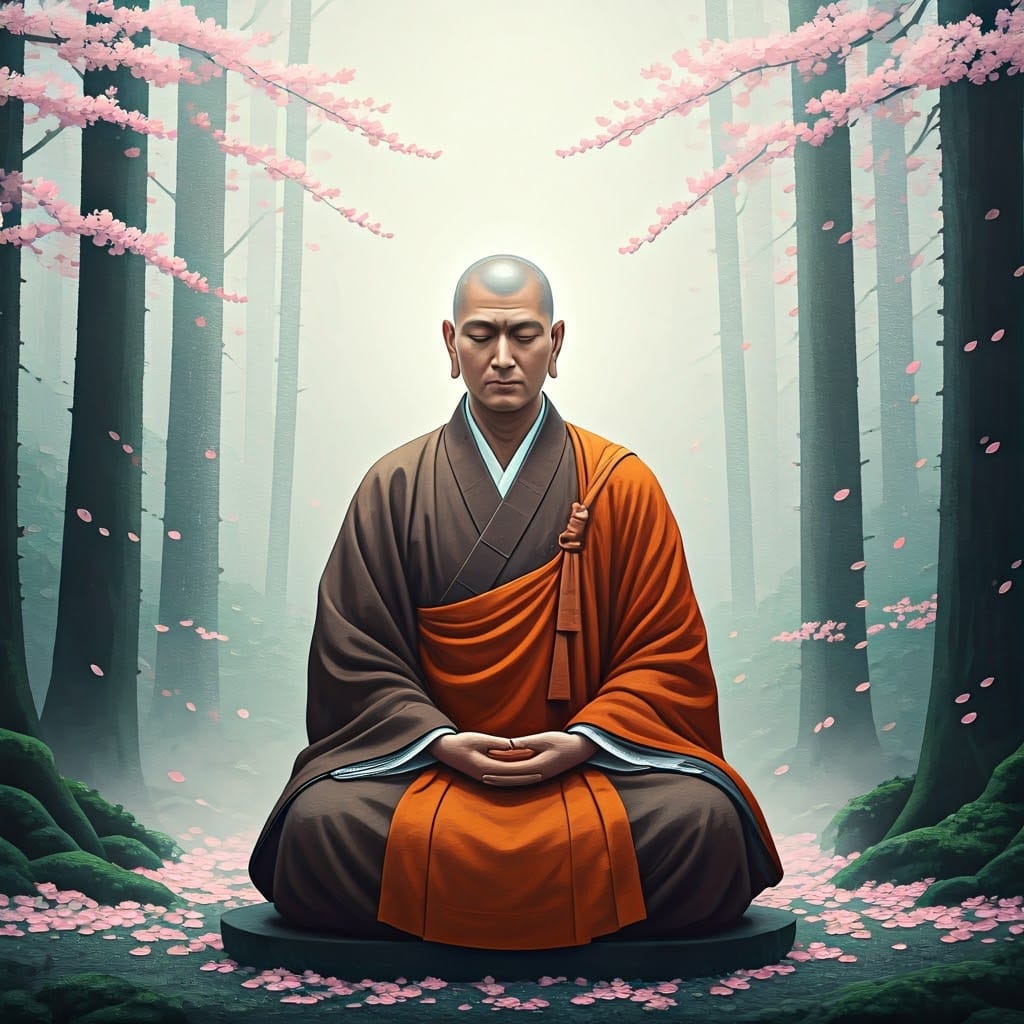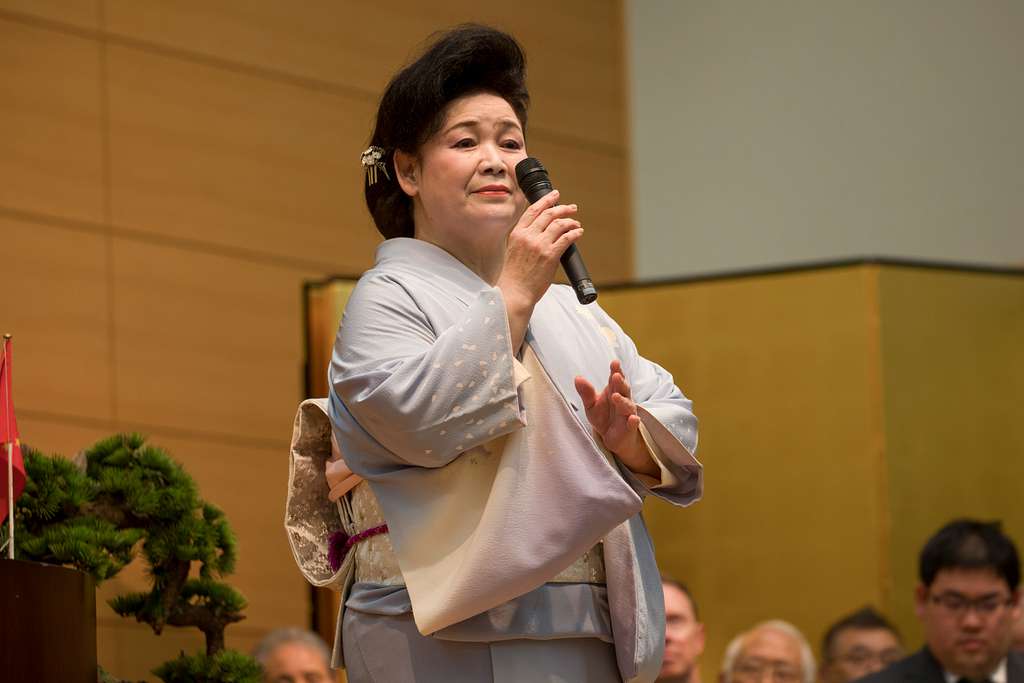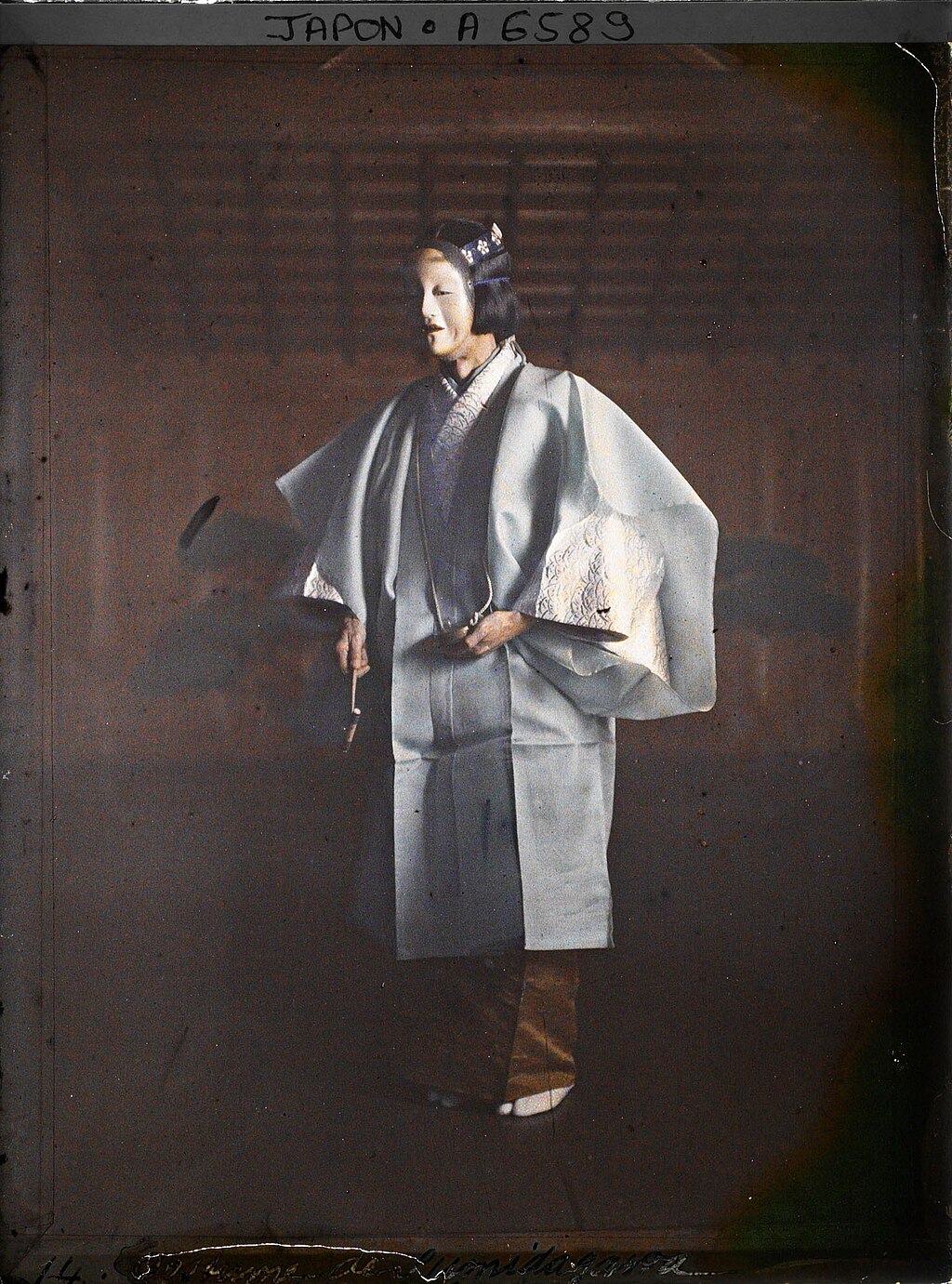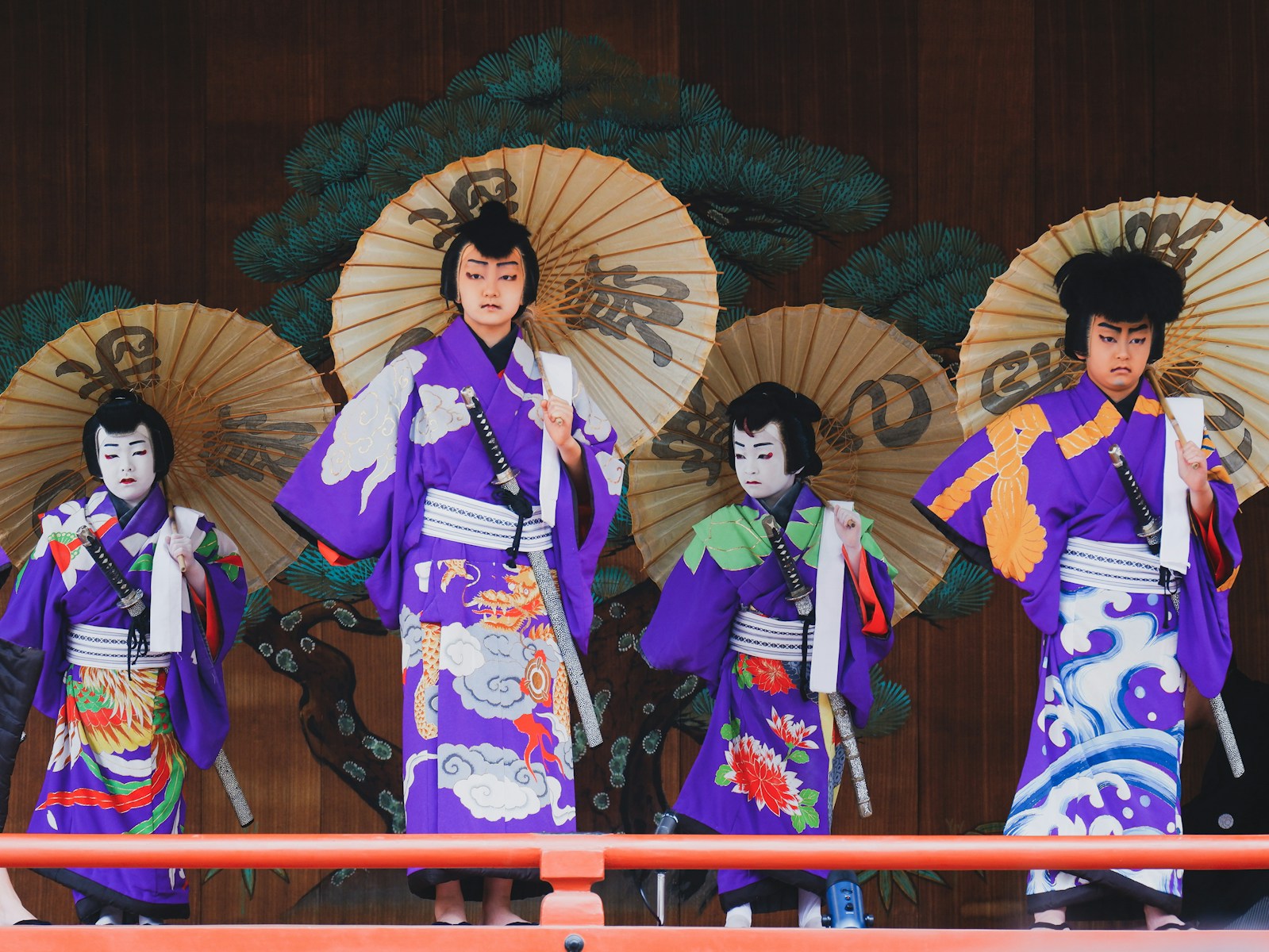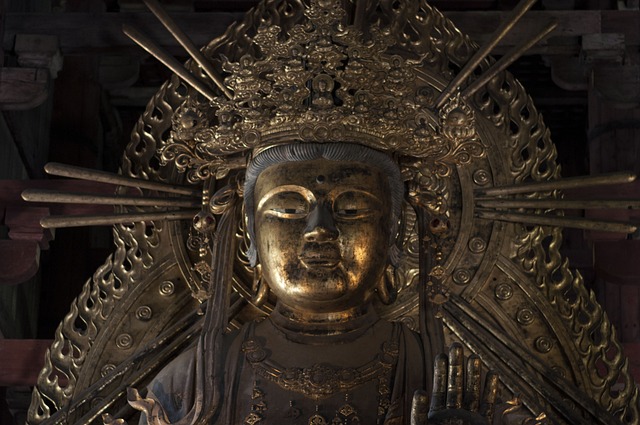(Translated from German by Thomas Alexander Kolbe)
Buddhist chants have a long history, especially in Japan, where they play a central role in religious practice and cultural tradition. These chants, often referred to as “Shōmyō” (声明), are closely tied to the development of Buddhism in Japan and have evolved over the centuries in various forms and styles.
Origins and Beginnings of Buddhist Chanting in Japan
The history of Buddhist chanting in Japan begins with the introduction of Buddhism in the 6th century. The official introduction occurred in 552 CE when King Seong of Baekje in Korea sent a Buddha statue and some sutras to Emperor Kinmei of Japan. This marked the beginning of the spread of Buddhism in Japan. Along with Buddhism came the practice of sutra recitation, which later evolved into the sung practice of Shōmyō (声明).
The first documented evidence of Buddhist chanting in Japan dates back to the Nara period (710–794), a time when Buddhism flourished under state sponsorship. During this period, the foundations for Buddhist liturgy were laid, including the chants used in religious ceremonies.
The term “Shōmyō” refers to the recitation of Buddhist sutras and other sacred texts in a sung form. This practice originated in India, where the Vedas were recited in a similar manner, and was transmitted to Japan through China and Korea.
Singing Techniques and Styles
Shōmyō is a sophisticated vocal practice that encompasses a wide range of techniques and styles. The two main styles of Shōmyō are “Bonsan” (梵唄) and “Kansan” (漢唄). Bonsan is based on Indian and Chinese models and is primarily sung in Sanskrit, while Kansan is recited in classical Chinese.
A distinctive technique of Shōmyō involves the use of long, sustained tones and melodies based on a pentatonic scale. These chants are often highly repetitive and meditative, supporting their use in meditation and spiritual practice.
One of the central techniques is the recitation on a single, prolonged tone (Tenchō), followed by melodies characterized by their slow, meditative nature. These techniques require intense breath control, precision in intonation, and concentration, as they aim to convey the spiritual significance of the texts. The art of Shōmyō is traditionally passed down orally from master to disciple.
Who Performed and Performs These Chants?
Traditionally, Buddhist chants were performed by monks and nuns in temples. These chants are an essential part of daily devotions and the conduct of religious ceremonies, such as funerals and festivals.
Today, Buddhist chanting is still practiced by monks, but also by lay followers who organize themselves into chanting groups. In some temples, there are even special schools or courses where laypeople can learn the art of Shōmyō.
Regional Specificities
While the basic techniques of Shōmyō are widespread throughout Japan, there are regional differences shaped by the various Buddhist schools and their specific rituals. For example, the Shōmyō of the Tendai school, based on Mount Hiei near Kyoto, differs in some aspects from that of the Shingon school, which has its headquarters on Mount Kōya.
Another example of regional variation is “Yamato Shōmyō” (大和声明), a form of chanting practiced in the Nara region, which is considered particularly ancient and pure.
Relevance in Society
Historically, Buddhist chants played a central role in Japanese society, as they were closely linked to religious practices and spiritual culture. They were not only practiced in temples but also in state ceremonies and court culture. During the Heian period (794–1185), Shōmyō experienced a golden age when it was also appreciated at the imperial court.
Today, Buddhist chants remain relevant, particularly in religious ceremonies such as funerals, memorial services, and other important rituals. They have also gained some popularity in modern Japanese culture, finding a place in meditation practices and even in the contemporary music scene.
Musical Examples from Past and Present
A famous example of traditional Buddhist chanting in Japan is the “Shichi-Koshō” (七高僧), a collection of chants dedicated to the seven most significant monks in early Japanese Buddhist history. These chants are still maintained in the temples of Kyoto and Nara.
In modern times, there are various adaptations and reinterpretations of Shōmyō, often in conjunction with other music genres. For instance, the composer Tōru Takemitsu (1930–1996) integrated Shōmyō into some of his works to bridge the gap between traditional and modern music.
Connections to Meditation Techniques
Shōmyō is closely connected with the meditation practices of Buddhism. The rhythmic and repetitive nature of the chants supports concentration and immersion in a meditative state. Many of the sung texts are sutras or mantras specifically designed to calm the mind and promote spiritual insight.
An example of the connection between Shōmyō and meditation is the practice of “Shingon-Chanting,” where monks and practitioners repeat certain mantras or sutras to achieve a state of deep concentration.
Notable Figures and Creators of Chants
Throughout history, there have been many significant monks and composers who contributed to the development of Shōmyō. One of the most renowned is Kūkai (774–835), the founder of the Shingon school of Buddhism. Kūkai brought numerous sutras and chants from China to Japan (in 806 CE) and developed his own liturgies, which are still used in the Shingon tradition today.
Another significant contribution came from Saichō (767–822), the founder of the Tendai school, who also introduced essential liturgical chants that are still sung today.
Evolution of the Chants: Themes, Techniques, Popularity
The themes of Buddhist chants have evolved over time, with a traditional focus on religious and spiritual content. The techniques of Shōmyō have also been refined and diversified, with increasing complexity in melody and rhythm.
The popularity of Buddhist chants has seen ups and downs over the centuries. While they were very popular during the Heian period, they lost some of their significance in the following centuries, before experiencing a kind of renaissance in modern Japan, especially during the Edo period (1603–1868), due to the promotion of Buddhism by the Tokugawa government.
Foreign Influences
The origins of Shōmyō are strongly influenced by foreign elements, particularly from India and China. These influences are evident not only in the vocal techniques but also in the texts and the overall spiritual orientation. Melodic structures from India and China were also adopted.
In modern Japan, there are also Western influences on Shōmyō, particularly in the way it is integrated into contemporary music and art. Composers like Tōru Takemitsu and some modern musicians have attempted to merge elements of Shōmyō with Western music, leading to new, innovative music styles such as Zen and meditation music.
Conclusion
Buddhist chants in Japan are a fascinating example of the deep connection between religion, culture, and music. They have a rich history that stretches from the beginnings of Buddhism in Japan to the modern era. Their development reflects both the influence of other cultures and the unique creative contributions of Japanese monks and musicians. Shōmyō remains a vibrant part of Japan’s spiritual tradition and has proven to be an art form that is both time-honored and open to new influences.

